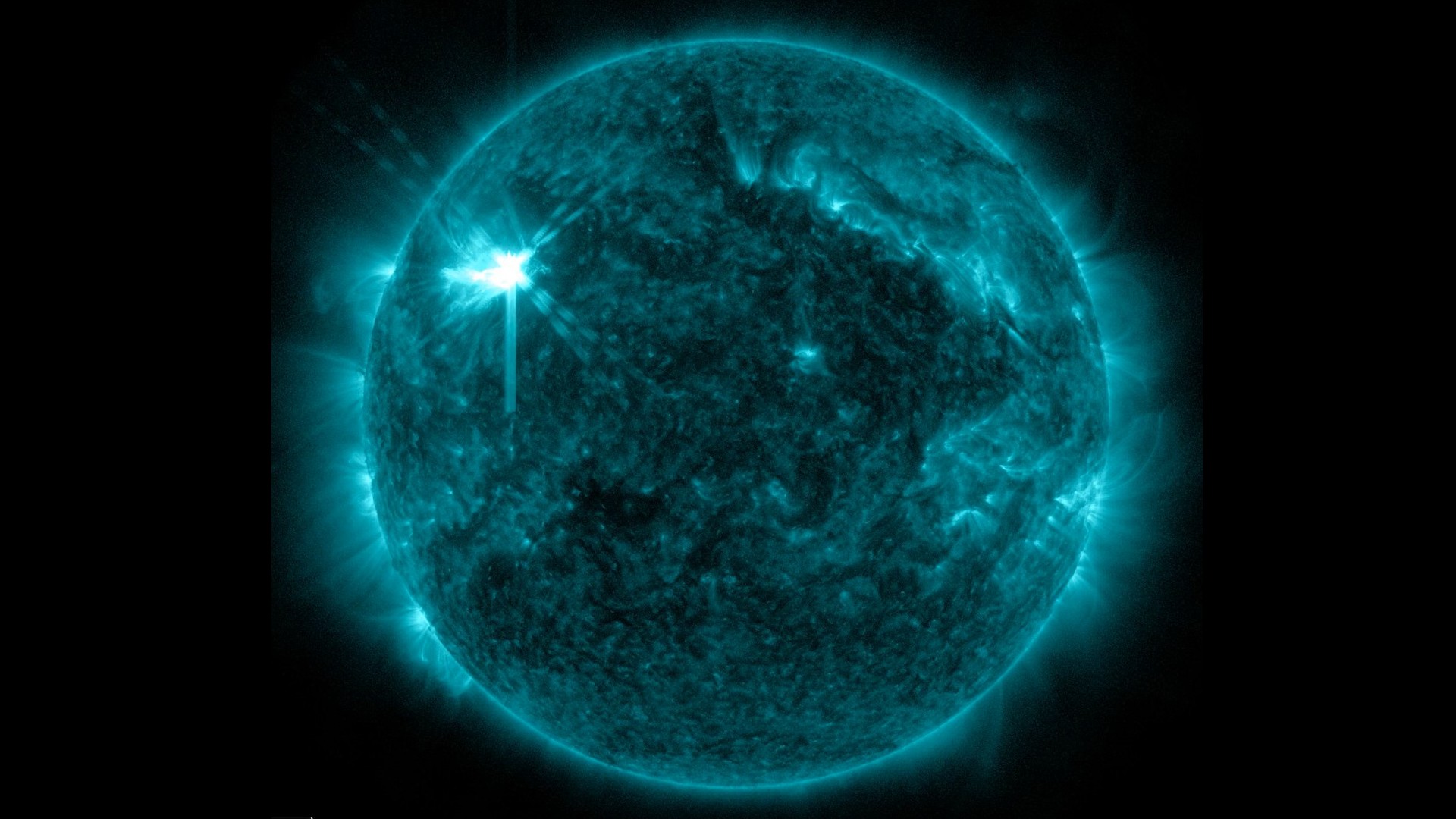
2 powerful flares erupt from sun; cell phone outages are reported in US (video)
Two powerful flares took place on the Sun, after which mobile communication outages were recorded in the United States. According to the US National Oceanic and Atmospheric Administration, the flares occurred in the part of the Sun that has recently continued to show magnetic activity.
The outbursts took place from Wednesday night to Thursday morning, with an interval of several hours. The first was a class X1.8 flare, the second was a class X1.7 flare.
"No apparent coronal mass ejections from these events have been observed at the time of this announcement, although it has not been ruled out," the US National Oceanic and Atmospheric Administration said in a statement.
The agency later issued a warning about solar radio emissions, which are sometimes accompanied by strong coronal mass ejections and solar radiation storms.
Meanwhile, widespread cellphone outages were reported across the U.S. after Thursday morning's solar flares. According to The Associated Press, tens of thousands of outages have been reported by major cellular carriers such as AT&T, Verzion and T-Mobile.
It is not yet clear if the two events are related, but reports of outages began at the same time as the solar flares. However, some scientists have questioned claims that there is a link between the two events.

The US National Oceanic and Atmospheric Administration also noted that the effects of these flares could be felt for several days. Although the magnetic storm caused by the ejected material is expected to bypass the Earth, it is still possible to feel its effects on the Earth on February 25.
Solar flares occur when magnetic energy builds up in the sun's atmosphere before the star engulfs that build-up in an intense burst of electromagnetic radiation. These flares are classified by size into groups, with X-class flares being the most powerful. After X class are M class flares, which are 10 times smaller than X class flares. Then there are class C and B flares, followed by class A flares, which are extremely weak and have no effect on Earth.
The sun's activity is currently increasing as it approaches the most active phase of its nearly 11-year solar cycle, known as "solar maximum."
- Related News
- Wheel of Death: new method will help astronauts stay fit in low gravity
- Due to anomalies of Orion spacecraft, lunar exploration program may be delayed for years։ NASA
- TAO Observatory: World's highest telescope to study evolution of galaxies and exoplanets
- Powerful M9.5 solar flare causes radio blackout in Pacific Ocean
- What will happen to the Earth if the Moon disappears?
- Key to conquering the Red Planet: Why is NASA studying solar storms on Mars?
- Most read
month
week
day
- Digital Julfa Network is launching a pan-Armenian centre in the metaverse, on the Fastexverse virtual platform 850
- Sparkles: Boston Dynamics unveils a furry robot dog that can dance (video) 765
- Xiaomi unveils exclusive Redmi Note 13 Pro+ dedicated to Messi and Argentina national team 719
- Is there a ninth planet in the solar system? Scientists find new evidence 652
- Smartphone catches fire in child's hand in Russia 652
- How to understand how protected a smartphone is from water and dust? 619
- What will happen to the Earth if the Moon disappears? 617
- World's largest 3D printer was created in USL It prints 29 meter-long structures 615
- New iPad Pro to receive M4 chip and to be more powerful than Apple computers 591
- iPhone 16 may get colored matte glass back panel, 7 colors 590
- Archive
